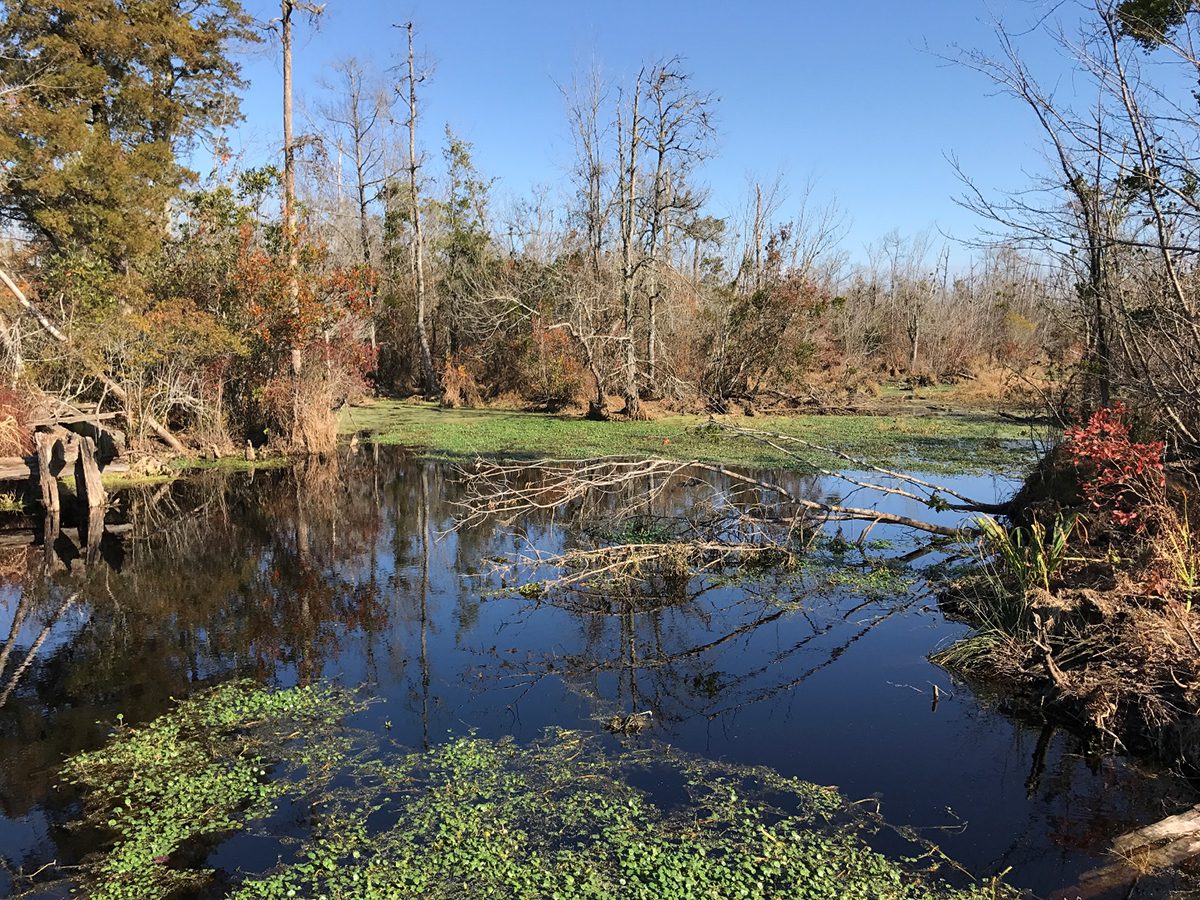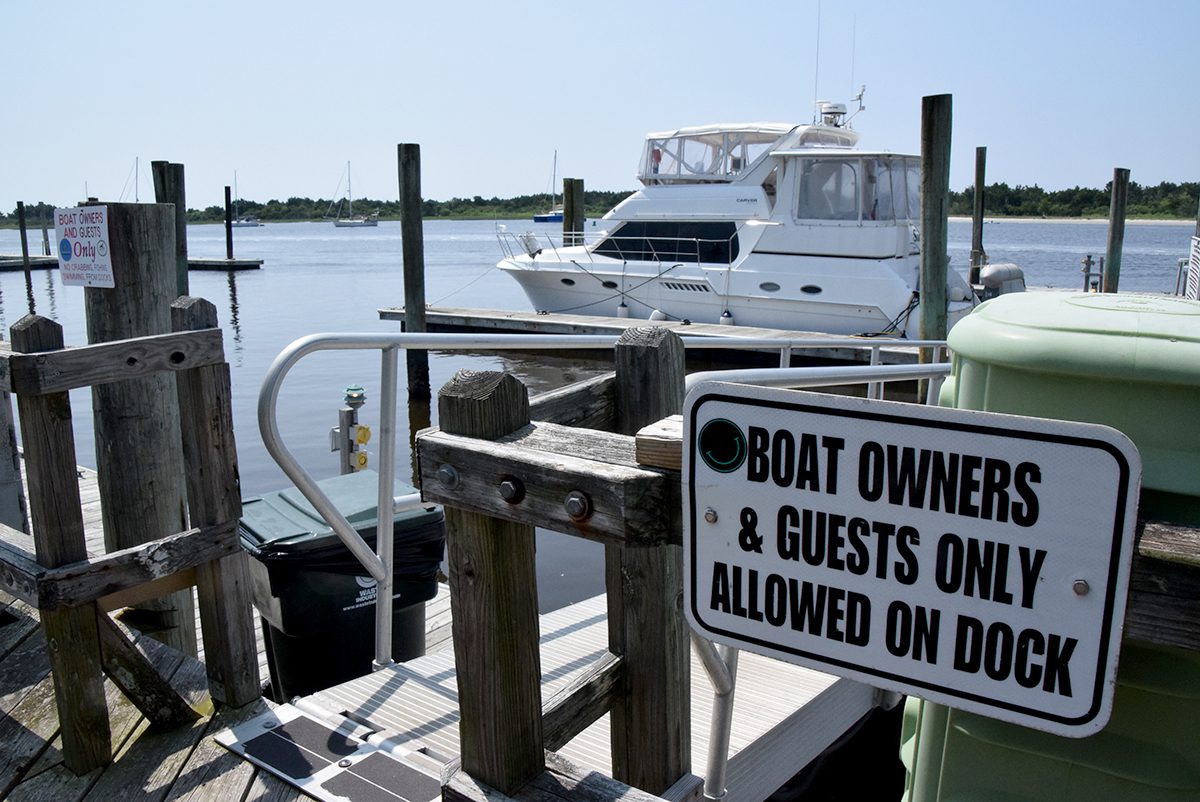
In a new plan to address climate pollution, state officials have taken what they call a “different approach” by making natural and working lands conservation and restoration a priority to offset greenhouse gas emissions.
North Carolina Department of Environmental Quality officials announced late Tuesday the state Priority Climate Action Plan, which “identifies high priority, ready-to-implement” greenhouse gas reduction measures that will provide “significant climate, air quality, and other co-benefits” to the state and its communities.
Supporter Spotlight
As required under the first phase of a federal grant program, the plan was developed over the past six months and then submitted this week to the Environmental Protection Agency. The state intends to use the plan to inform the application due April 1 for the $4.6 billion in competitive grants, the second phase. The EPA is to award these grants ranging from $2 million to $500 million later in the year. If NCDEQ is awarded the grant, the action plan will be developed into a Comprehensive Climate Action Plan due July 5, 2025.
While most of the measures in the 189-page plan focuses on greenhouse gas emissions sources — transportation, electric power generation, industry, buildings and waste management – NCDEQ “took a different approach to develop priority (natural and working lands) measures, performed separately but in parallel to the development and prioritization of measures to reduce (greenhouse gas) emissions in other sectors.”
The plan explains that there is “compelling potential” for natural and working lands to “substantially offset (greenhouse gas emissions) by permanently storing atmospheric carbon in the ground and plants,” the report states. “The natural and working lands “sector ‘netted out’ 34% of the state’s gross GHG emissions in 2020.”
Jacob Boyd, who helped develop the natural and working lands section of the plan, told Coastal Review Wednesday that incorporating natural and working lands into the plan has been considered since the start.
“From the very beginning, the department had made the decision that natural and working lands should be a component, not just the greenhouse gas emitting sectors,” he said.
Supporter Spotlight
Boyd, who is the new salt marsh program director for the North Carolina Coastal Federation, was involved in the plan through his previous role as habitat and enhancement section chief at NCDEQ’s Division of Marine Fisheries. Boyd was with the division for 17 years, serving in various roles until last month when he joined the nonprofit conservation organization that also publishes Coastal Review.
Boyd explained that with past plans and strategies, the focus was on resilience with carbon sequestration as a side benefit. “We’re still highlighting the resilience co-benefits,” Boyd said, but now it’s more carbon-focused. “This is really the first time we’ve had an opportunity to do that, which I think it’s great.”
An interagency effort, the Priority Climate Action Plan was built using nearly 50 existing state reports, including the greenhouse gas inventory, a clean energy plan, a clean transportation plan, a zero-emission vehicle plan, climate strategy reports, and a natural and working lands action plan. These were reviewed and consolidated into sectors.
Natural and working lands offer protection and restoration and voiding emissions, Boyd explained.
“All land is comprised of carbon, which is a greenhouse gas, and some soils and land have higher amounts of that carbon, “Boyd explained, adding coastal habitats such as salt marshes, pocosins and peatlands are some of the highest carbon-rich habitats in the world.
If we lose those, most of that carbon gets emitted back into the atmosphere, but when we protect those coastal habitats, it keeps the carbon in those soils and emits less carbon, and the emissions can be avoided.
“We not only get those carbon benefits, but we also protect natural resources and critical habitat and provide flood resiliency,” he said.
Boyd said he’s been involved in this type of planning since 2018 when NCDEQ began developing its Natural and Working Lands Action Plan, published in 2020, and related projects, including the recent N.C. Coastal Habitat Greenhouse Gas Inventory.
Because of this experience, Boyd said he was asked to be involved in the action plan development and implementation. It took about six months to develop.
The working group used as a roadmap the 2020 land action plan, which highlighted strategies like high-carbon coastal habitats that help avoid emissions and with carbon sequestration, as a roadmap for this section. As they progressed through developing, these important strategies rose to the top as being needing to be some of the important components of the plan.
The Coastal Federation will be one of a few organizations being brought in to implement projects to conserve and restore these high-carbon habitats.
“We are excited to partner with the State to safeguard and rejuvenate coastal ecosystems given their important role in storing and sequestering carbon. Salt marshes, peatlands, and adjacent working lands also provide an important buffer for coastal communities, offering resilience against extreme weather events and sea level rise,” Executive Director Braxton Davis said. “This Plan seeks to harness the strength of nature itself as a key line of defense in combating climate change and sea level rise.”
Boyd said though he’s transited from NCDEQ to the Coastal Federation, he will continue to work on the action plan for the natural and working land sector.
The plan also notes there are five executive orders in place for climate action and greenhouse gas reduction targets, many of which are focused on the transportation sector.
Transportation, the largest emissions sector, represents about 36% of all greenhouse gas emissions, according to the report. That makes transportation measures a top priority. These include increasing zero-emission and electric vehicles, including in the state fleet as well as school and transit buses, installing and maintaining an electric vehicle charging network, and going after programs to increase efficiency and reduce emissions at port and freight terminals.
“The N.C. Department of Transportation is working with its partners in the public and private sectors to ensure North Carolina is prepared as we transition to a clean energy economy and invest in more sustainable and accessible transportation options,” Jamie Kritzer, assistant director of communications for NCDOT, told Coastal Review Wednesday.
In keeping with the Cooper administration’s executive order to increase the total number of registered zero-emission vehicles, Kritzer continued, NCDOT led the creation of the Clean Transportation Plan, which was developed in about a year by a diverse group of stakeholders and released last April.
“NCDOT is working to carry out the plan’s strategies to encourage the transition to zero-emission vehicles, ensure electric vehicle charging stations and other clean transportation infrastructure are in place, and help make clean mobility options accessible to everyone,” he said.
NCDOT and the NCDEQ also are working on the measure in the Climate Pollution Reduction Grants program related to reducing vehicle miles traveled, Kritzer explained.
“Together, our agencies will identify bicycle and pedestrian projects in the rural parts of the state, especially in lower income and disadvantaged communities where current funding through NCDOT programs does not exist. These projects will help reduce vehicle miles traveled, which supports important goals set forth in the Clean Transportation Plan,” Kritzer said.
Southern Environmental Law Center Climate Initiative Leader Alys Campaigne said in a statement about Alabama, Tennessee, Virginia, Georgia, North Carolina and South Carolina submitting Priority Climate Action Plans to the EPA that the South plays an outsized role in contributing to climate change and severe, accelerating impacts are impacting vulnerable residents with higher pollution exposure and less ability to adapt.
“We applaud Southern Governors and Mayors for developing bold local strategies to protect people from pollution and invest in innovative projects that spur a cleaner economy and more resilient communities. We now have sector-based data on the sources of climate pollution and a roadmap for taking meaningful action in each of our six states,” Campaigne said. “These plans will help draw other competitive public and private investments to our region to deliver on the clean energy transition and respond to community needs.”
DEQ is accepting comments and suggestions through June 3 for program, which will be considered as the state develops its Comprehensive Climate Action Plan for the implementation phase. Send comments through the online form, via email to cprg@deq.nc.gov or by calling 919-707-8757.







